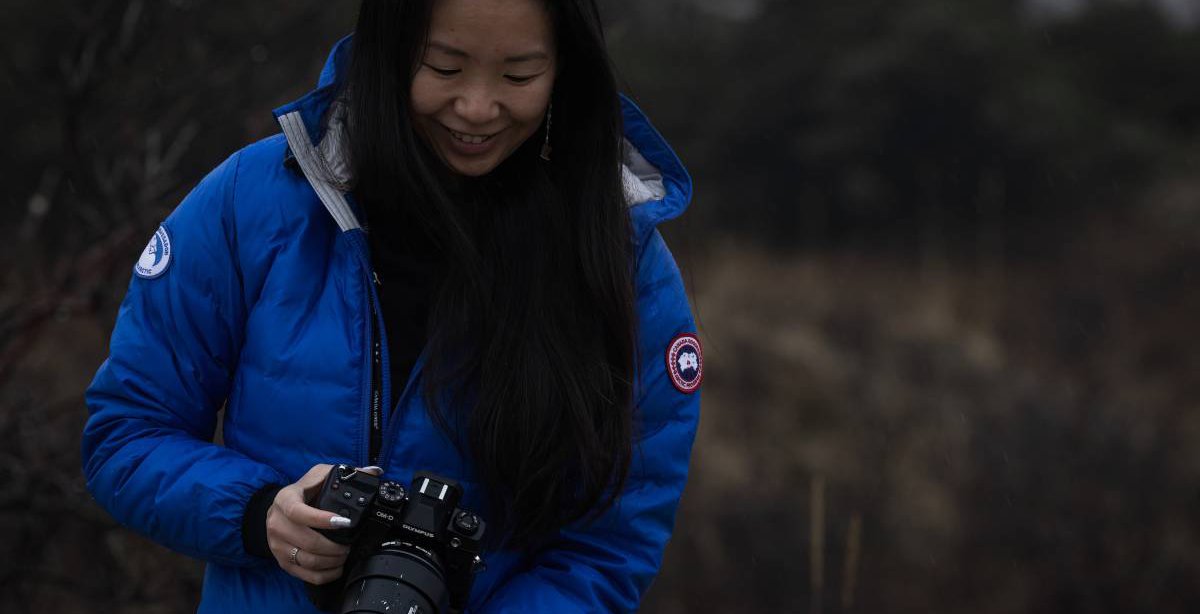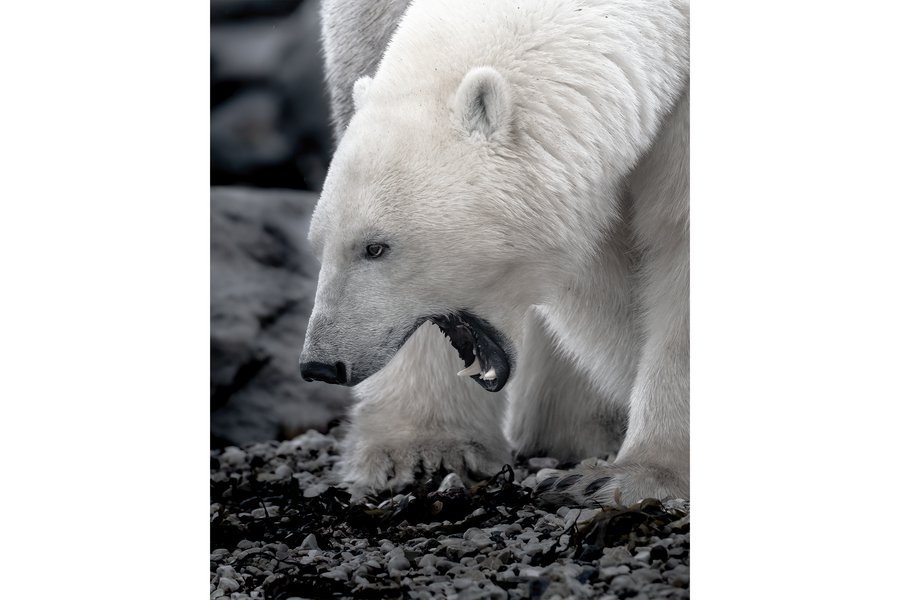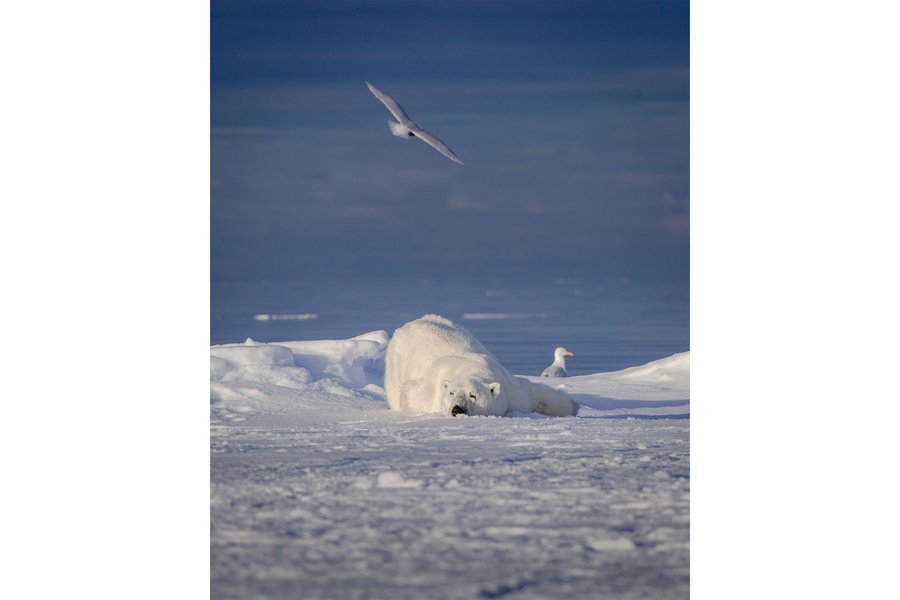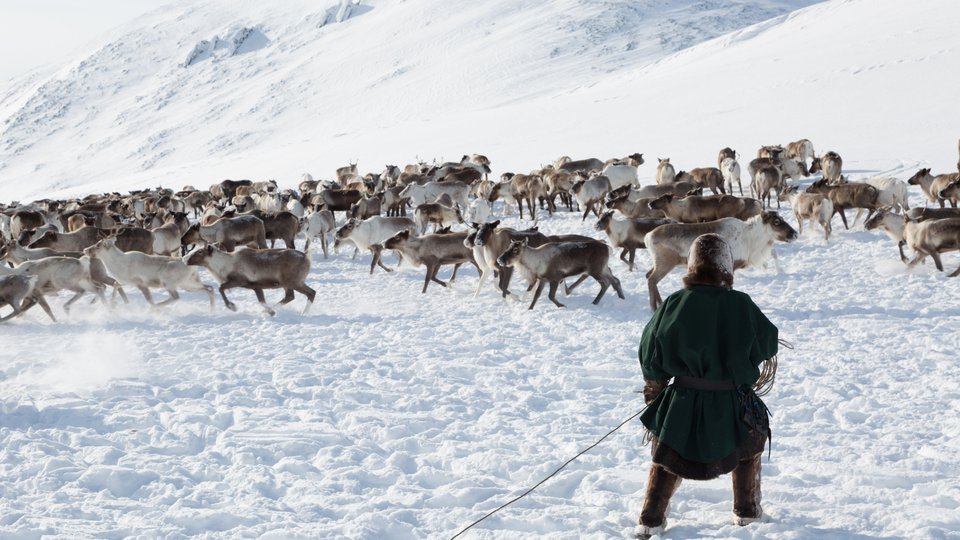
At Polar Bears International, our roots began in photography, and it remains a core part of our identity. Photography is a crucial tool that helps us share the stories of polar bears and their Arctic habitat. With so many skilled photographers and storytellers in the field today, we’ve created a Photography Ambassador Program, partnering with a few talented individuals to help us bring the North to life for our polar bear community. Keep an eye out for their incredible visuals and stories from the field.
In this Q&A in celebration of our 15-year partnership with Canada Goose, we’d like to introduce ambassador Jenny Wong, an exciting, fresh talent in conservation photography. In her relatively short career, Jenny has been named a Canadian Geographic Fellow, a National Geographic Your Shot contributor, and a Polar Pro ambassador. She is dedicated to using her craft to spread awareness about the frontlines and last lines of climate change, the Arctic, including documenting polar bears and Polar Bears International for Canada Goose. We talked with Jenny about her life’s work and her passion for the frozen North.

Photo: Jenny Wong
Q: When did you start photographing Arctic wildlife?
A: As an avid explorer of the natural world, I have always had an urgency to see the places that may no longer be. After a trip to Antarctica in 2015, my eyes were set on the quickly changing Arctic. Though I have skirted around the Subarctic, it wasn’t until 2019 that I made it onto the sea ice in the Canadian High Arctic. It was a trip that changed my life. I camped on the sea ice for two weeks, commuted over 400 kilometers via snowmobile between Clyde River and Pond Inlet, and saw my first and only polar bear of the trip. Nothing was easy or simple; even getting fresh water amongst the salty ice was an ordeal–one that involved finding an iceberg safe enough to harvest water from.
Q: What drew you to photographing polar bears?
A: Something that stuck with me since my Baffin trip was my vulnerability and dependency on the sea ice every day. As my feet broke ice into pools of Arctic water, I would wonder if it was a boot, leg, or full plunge day. From jumping over cracks in the sea ice with snowmobiles to finding safe ice to camp on, that feeling of dependency and vulnerability repeated for two weeks. It didn’t take long for me to understand the value of stable and predictable sea ice. It was a story I felt personally invested in, and there was really no better way of telling that story than having the two apex predators of the North, humans and polar bears, be my main characters. Being at the top of the food chain, their story essentially encompasses all that live and thrive in the Arctic.
Q: What’s your favorite part about photographing polar bears?
A: There’s a sense of gratitude after every encounter regardless if an amazing photo was made. The polar bear is a threatened animal whose habitat is deteriorating before my eyes. Not deteriorating because of a physical encroachment of civilizations like most species, but rather by the inconspicuous hand of climate warming. The world outside the Arctic is no longer insulated from climate warming, and in the last five years, it has affected just about every corner of our planet. The most precious part of being in the presence of polar bears is the sense of hope for humanity to turn things around; the gratitude and hope that it isn’t too late.
Q: What are some of the challenges of photographing in the Arctic?
A: Cost, logistics, and safety. The cost of any polar expedition is undoubtedly a huge barrier, and is the reason it took me until 2019 to see my first polar bear. But I’m fortunate–as an adventurer and wildlife photographer specializing in remote places I have been able to find assignments and sponsors that allow me to pursue my passion projects in the Arctic. None of these remote places I visit have roads that lead there. Trips are planned a year or two in advance, with the need to send gear like snowmobiles and tents out to the expedition the summer prior so it will be there when we arrive in the spring. Food is vacuum-packed and brought up from Ottawa. Arrangements are made with local Inuit guides to help us navigate the sea ice. Safety is, above all else, number one. Ice and weather will likely take us before a bear does, especially when we are moving. As we set up camp, there’s always a 24-hour bear watch. The challenges of photography will always pale to the challenges of the expedition. These are also the struggles of any polar science project, to say the least.

Photo: Jenny Wong
Q: How has the Arctic (and the polar bears’ habitat) changed since you began documenting the ecosystem through photography?
A: I cannot speak to the changes I’ve witnessed in my short career in the Arctic, but can most definitely say the stability and predictability of sea ice is of great concern right now. Not just for the bears, but for Inuit and explorers like myself. All species, including humans, thrive in stability and predictability, and adaptation happens with slow incremental change. Right now this change is too fast for bears and humans, and conditions are almost always unpredictable. Outside of the polar regions we are no longer insulated from the conditions of a warming planet and disappearing sea ice. The frequency and severity of natural disasters that were one-off occurrences are now the norm, all of which has been linked to the current state of the climate crisis.
Q: How did you become involved with Polar Bears International?
A: I feel young to say that it was all social media. With an obsession to champion the story of bears and ice, I naturally gravitated to Polar Bears International. It was a few years of just admiring from afar, and simply sharing their message before actually meeting any of the staff in Churchill 2020. Canada Goose has been a long-time partner of Polar Bears International, and has also been an incredible support through all of my expeditions in the North, providing me with the best outer gear necessary for me to not only survive but thrive in any condition. Knowing of the relationship, I offered to photograph some content to celebrate their partnership. From there it’s been a flourishing friendship between all the staff I have had the pleasure of meeting with in person and online from the Polar Bears International organization to all of the generous sponsors.
Q: Do you have any favorite moments or funny stories from the field to share?
A: There’s a ton of beautiful moments in the field, but something that allows me to relive the impacts of bears on my life is getting to see the reaction of people seeing their first polar bear in person. The excitement, the speechless silence that follows, the tears; for some you can see that the singular experience will change them forever as well.





